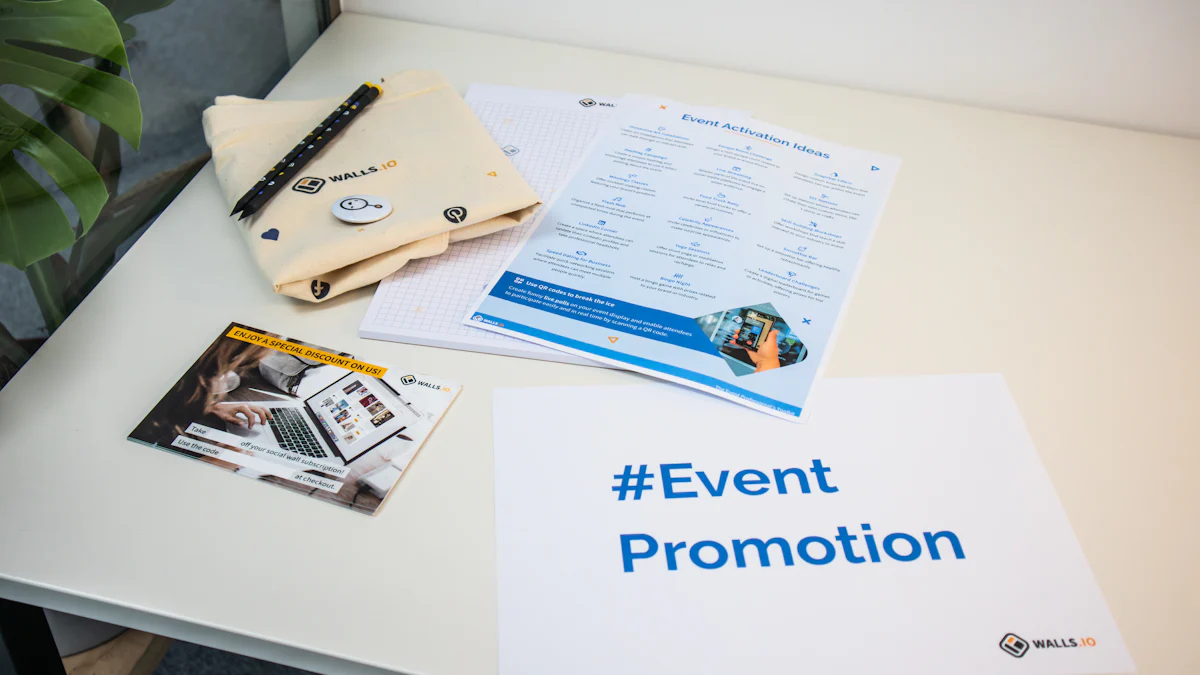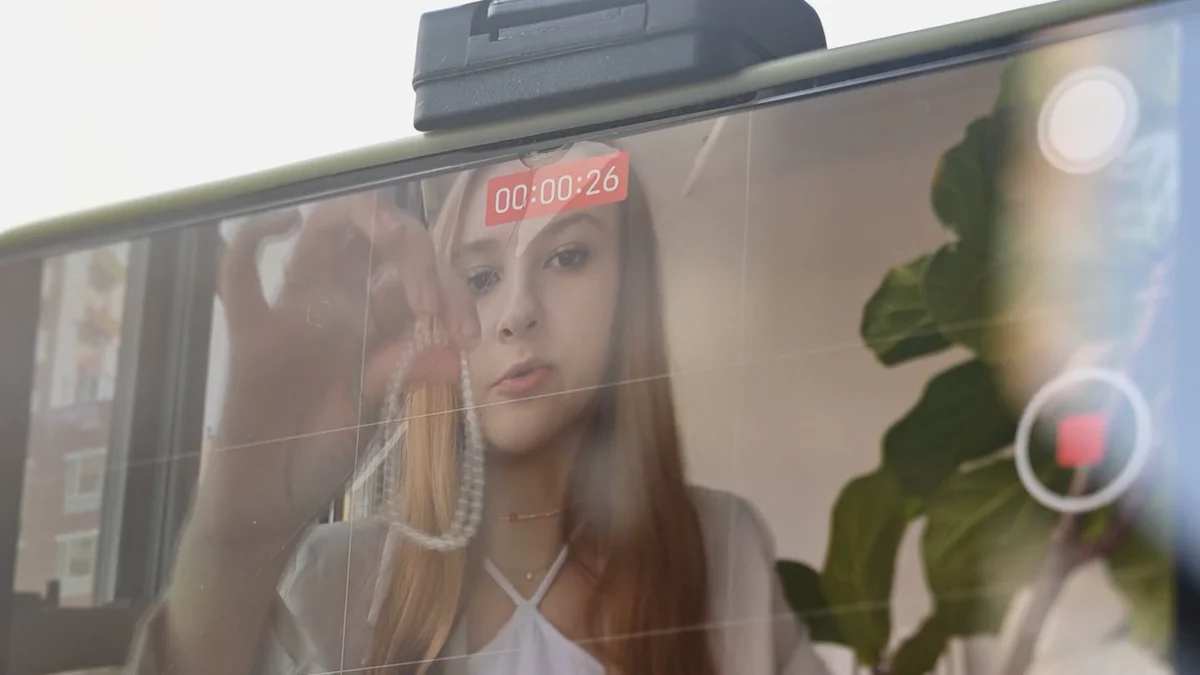How to Find and Collaborate with B2B Influencers Effectively

B2B influencer marketing has become a powerful tool for driving business growth. It delivers measurable results, with an average ROI of $6.50 for every $1 invested. Businesses using this strategy generate three times as many leads as traditional marketing methods. Influencers help you expand your reach and build credibility within your industry. For example, campaigns involving influencers have achieved up to 342% better click-through rates and reached millions of potential customers. These results show why more than half of marketers plan to increase their budgets for influencer marketing. By collaborating with the right influencers, you can enhance your brand’s visibility and engagement.
Define Goals and Audience for B2B Influencer Marketing
Set Clear Business Objectives
Before diving into B2B influencer marketing, you need to define what you want to achieve. Clear objectives guide your efforts and ensure measurable results. Businesses often use influencer marketing to accomplish several goals. These include increasing brand awareness, generating leads, building trust, driving thought leadership, and enhancing customer loyalty.
For example, collaborating with industry thought leaders can help you build credibility and expand your reach. Influencers can also drive leads by providing social proof and authentic recommendations. When setting your goals, focus on aligning them with your broader business strategy. Whether you aim to boost conversions or position your brand as an industry leader, having a clear vision will help you measure success effectively.
Identify Your Target Audience
Understanding your target audience is essential for any influencer marketing strategy. In B2B campaigns, you typically aim to influence a group of decision-makers rather than a single individual. These decision-makers often include mid to senior-level executives who play a role in the purchasing process.
B2B products and services are usually complex, requiring influencers with deep industry knowledge to communicate effectively. Look for influencers who are recognized thought leaders in your field. They should have credible expertise and a dedicated following. Their audience should align with your target market to ensure your message resonates.
For example, if your company offers software solutions for financial institutions, partnering with an influencer who specializes in fintech can enhance your campaign’s effectiveness. This alignment ensures your brand reaches potential customers who are genuinely interested in your offerings. By identifying the right audience and influencers, you can maximize the impact of your B2B influencer marketing efforts.
Methods to Identify B2B Influencers

Leverage Digital Tools and Platforms
Digital tools simplify influencer identification by providing access to comprehensive databases. Platforms like Favikon allow you to filter B2B influencers by industry, reach, and content style. These tools cover multiple channels, including LinkedIn, podcasts, and newsletters, making them versatile for B2B influencer marketing.
Other influencer discovery tools, such as Tagger by SproutSocial, Heepsy, and Julius, help validate influencer data. They also enable you to initiate personalized recruiting efforts. These platforms streamline the process of finding influencers who align with your brand and audience. By using these tools, you can save time and focus on building meaningful partnerships.
Network at Industry Events
Industry events offer excellent opportunities for influencer identification. You can meet thought leaders and assess their expertise firsthand. Many successful collaborations have started at such events. For instance, SAP invited influencers to discuss machine learning and IoT at their events, which trended in Germany and generated significant social media buzz. Similarly, Cisco Champions engaged IT experts through weekly podcasts, showcasing their thought leadership and driving audience engagement.
When attending events, focus on connecting with professionals who actively participate in discussions. Look for individuals who share valuable insights and have a strong presence in your industry. These connections can lead to impactful influencer marketing campaigns.
| Brand/Influencer | Description | Impact | |-------------------------|-----------------------------------------------------|---------------------------------------------| | Rachel Karten/SproutSocial | Promoted a livestream event with industry leaders. | Effective promotion on LinkedIn. | | Cisco Champions | Weekly podcast featuring IT experts. | Engages technologists and showcases expertise. | | SAP | Discussed machine learning and IoT at events. | Event trended in Germany and drove mentions.|
Conduct Manual Research
Manual research remains a reliable method for finding B2B influencers. Start by defining your target audience and goals. Use platforms like LinkedIn, YouTube, and Twitter to identify professionals with strong engagement and thought leadership. Focus on individuals who regularly share tutorials, industry analysis, or valuable insights.
Social media listening tools can help you analyze influencer metrics, such as follower engagement and content relevance. Explore industry-specific forums, webinars, and conferences to find experts actively contributing to discussions. Look for influencers who align with your brand values and niche. This approach ensures your influencer selection process is thorough and effective.
Build an Effective Influencer Marketing Strategy
Establish Authentic Relationships
Building authentic relationships with b2b influencers is the foundation of a successful influencer marketing strategy. Start by offering value to influencers. Share insightful content or provide exclusive access to your products or services. This approach demonstrates your commitment to a mutually beneficial partnership. For example, many brands invite influencers to industry events or offer early access to new tools, fostering trust and collaboration.
Focus on creating genuine connections. Attend trade shows or webinars where influencers are present. Engage with their content on social media to show your interest in their work. Authenticity and transparency are key. Influencers value partnerships that align with their values and audience needs. By prioritizing these elements, you can build long-term influencer partnerships that drive strong engagement and credibility.
Align on Collaboration Goals
Clear collaboration goals ensure your influencer marketing campaigns deliver measurable results. Start by identifying influencers who align with your brand values and target audience. Discuss the type of content you want to create and the message you aim to communicate. For example, you might co-host a webinar to showcase thought leadership or create case studies to highlight success stories.
Strategic partnerships thrive when both parties understand the objectives. Whether you aim to increase brand awareness or generate leads, ensure influencers can effectively convey your message. Consider leveraging micro-influencers for niche campaigns or planning social media takeovers to amplify your reach. Aligning on these goals ensures your influencer marketing plan stays focused and impactful.
| Collaboration Goal | Description | |----------------------------------------|--------------------------------------------------------------------------------------------------| | Choose the Right Influencers | Identify creators who align with your brand and audience. | | Focus on Quality Content | Ensure influencers can engage their followers effectively. | | Plan Strategic Takeovers | Organize takeovers to reach new audiences. | | Highlight Success Stories | Use case studies to build credibility. | | Leverage Micro-Influencers | Target specific niches for better reach. | | Build Lasting Relationships | Foster long-term partnerships for ongoing engagement. |
Co-Create Engaging Content
Collaborating with influencers to create engaging content is a powerful way to connect with your audience. Co-creation allows you to combine your expertise with the influencer’s unique voice and style. For example, Adobe’s #AdobeInsiders program involved influencers sharing insights on Adobe tools and participating in events. Similarly, HubSpot partnered with marketing influencers to produce educational content that resonated with their audience.
Focus on creating content that adds value. This could include tutorials, case studies, or interactive webinars. Platforms like LinkedIn and YouTube are ideal for sharing this content, as they cater to professional audiences. Encourage influencers to share the content across their networks to maximize visibility. By co-creating authentic and relevant content, you can strengthen your b2b influencer strategy and enhance your brand’s authority.
Measure the Success of B2B Influencer Campaigns

Track Key Metrics and KPIs
Measuring the success of your B2B influencer marketing campaigns starts with tracking the right metrics. These metrics provide insights into how well your campaign performs and whether it meets your business objectives. Focus on metrics that align with your goals, such as engagement, reach, and conversions.
Here’s a breakdown of key metrics to monitor:
| Metric | Description | |---------------------------------|-----------------------------------------------------------------------------| | Total Campaign’s Network Exposure | The number of followers or connections of the influencers involved. | | Campaign’s Post Impressions | The total number of times the campaign’s content is displayed to audiences. | | Campaign’s Total Interaction | The sum of likes, comments, clicks, and re-shares on campaign posts. | | Clicks and Click-Through-Rate (CTR) | The number of clicks and the percentage of users who clicked on the content. | | Campaign’s Post Engagement Rate | Total interactions divided by impressions, showing audience engagement. | | New Company Page Followers | The number of new followers gained during the campaign. | | Traffic and Traffic Source | The increase in website traffic and its origin, such as LinkedIn. | | Conversions | The number of visitors who registered or inquired about your services. |
Tracking these metrics helps you understand how your campaign resonates with your target audience. For example, a high engagement rate indicates that your content connects well with viewers. Use influencer discovery tools to analyze these metrics and refine your strategy for future campaigns.
Evaluate ROI and Business Impact
Evaluating the ROI and business impact of your B2B influencer campaigns ensures you understand their value. Start by building measurement into your strategy from the beginning. Tailor your evaluation to the type of campaign and focus on metrics that matter most to your goals.
Consider these factors when assessing ROI:
- Impressions: Measure how often the influencer’s content appears to audiences.
- Reach: Determine the potential size of the audience exposed to the content.
- Engagement: Analyze the level of interaction, such as likes, comments, and shares.
- Conversions: Track the number of desired actions, like sign-ups or inquiries.
- Revenue: Calculate the revenue generated from the campaign.
- Cost: Compare the cost of collaborating with influencers to the revenue earned.
Set benchmarks to compare influencer efforts with non-influencer campaigns. For example, if your campaign drives more conversions than traditional methods, it demonstrates the effectiveness of b2b influencers. By analyzing these metrics, you can identify which strategies deliver the best results and optimize future campaigns.
Tips for Long-Term Success When You Work with B2B Influencers
Foster Ongoing Communication
Maintaining regular communication with B2B influencers is essential for building strong, long-term partnerships. Frequent interactions create a sense of community and make influencers feel more connected to your brand. When you engage consistently, influencers become more invested in your success and are more likely to represent your brand authentically.
Start by offering value in your conversations. Share insights, provide feedback, or give influencers early access to your products or services. This approach ensures that your partnership meets the needs of both your audience and theirs. For example, if you’re collaborating with influencers in the tech industry, you could share exclusive updates about your latest innovations. These efforts demonstrate your commitment to a mutually beneficial relationship.
B2B influencer marketing thrives on deeper connections. Regular communication helps you align on goals, refine strategies, and address challenges promptly. It also allows you to adapt to changing market trends together. By fostering ongoing communication, you can build partnerships that enhance your credibility and drive impactful influencer marketing campaigns.
Build Trust and Loyalty
Trust is the cornerstone of any successful relationship with B2B influencers. To build trust, focus on creating mutual value. Attend industry events or trade shows to connect with influencers personally. These face-to-face interactions strengthen your bond and show your dedication to the partnership. Collaborating on content, such as webinars or podcasts, also enhances credibility and positions both parties as thought leaders.
Providing ongoing support is another effective strategy. Offer influencers resources like marketing materials or access to exclusive events. Recognize their contributions by publicly acknowledging their efforts through social media highlights or personalized thank-you notes. These gestures show appreciation and reinforce loyalty.
When influencers trust your brand, they are more likely to recommend it to their audience. This trust fosters long-term loyalty, ensuring that your partnerships remain strong over time. By focusing on trust-building strategies, you can create lasting relationships that amplify the impact of your B2B influencer marketing efforts.
A strategic approach to b2b influencer marketing ensures your campaigns deliver measurable results. By defining clear objectives, identifying your audience, and selecting the right influencers, you can create impactful collaborations. Successful influencer marketing campaigns enhance credibility, generate quality leads, and position your brand as a thought leader.
Take actionable steps to build lasting partnerships. Focus on authenticity, co-create valuable content, and nurture relationships through consistent communication. Leverage both your brand and influencer channels to maximize reach. With these strategies, you can unlock the full potential of influencer marketing for your business.
FAQ
What is the best platform for B2B influencer marketing?
LinkedIn is one of the most effective platforms for B2B influencer marketing. It connects you with professionals and decision-makers in your industry. You can use it to identify influencers, share content, and engage with your target audience.
How do you choose the right B2B influencer?
Focus on influencers with expertise in your industry and an audience that aligns with your target market. Evaluate their engagement rates, content quality, and credibility. Ensure their values match your brand to create authentic partnerships.
How much should you budget for B2B influencer marketing?
Budgets vary depending on your goals and the influencer’s reach. Start small and scale as you see results. Consider factors like content creation costs, influencer fees, and campaign duration when planning your budget.
How do you measure the success of a B2B influencer campaign?
Track metrics like engagement, reach, and conversions. Use tools to analyze data and compare results to your objectives. Focus on metrics that align with your goals, such as lead generation or brand awareness.
Can small businesses benefit from B2B influencer marketing?
Yes, small businesses can benefit by partnering with micro-influencers. These influencers often have niche audiences and higher engagement rates. They can help you build credibility and connect with potential customers effectively.
See Also
Essential Tips for Choosing the Right Influencer Platform
Navigating Influencer Marketing Tools for Small Enterprises
Seven Key Steps to Create an Effective Influencer Strategy
Seven Essential Steps to Establish Your Influencer Marketplace
